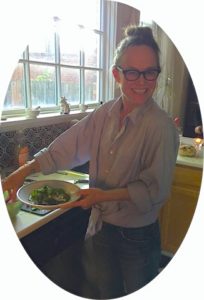Fresh Ricotta Cheese, You Can Make It, Plastics Free!
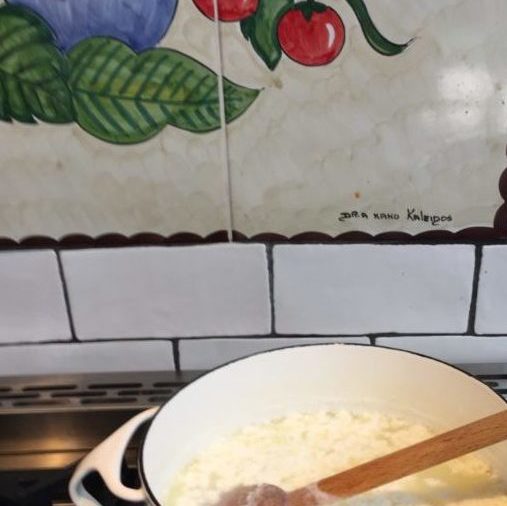
It’s so easy to make your own ricotta cheese, and amazingly delicious, too that I can’t imagine ever again buying the plastic tub. There are a million things you can make with it to eat straightaway (smear on toast, sprinkle with cinnamon, add fruit); or you can freeze it for later. Stuffed shells, anyone? And here’s an idea: summertime veg and herb blowout.
(Almost) best of all: no plastic waste.
The only special-ish equipment you’ll need is either cheesecloth or a nut milk bag. Having neither when I first tried this, I used a paper coffee filter. It was a mess. Don’t do that.
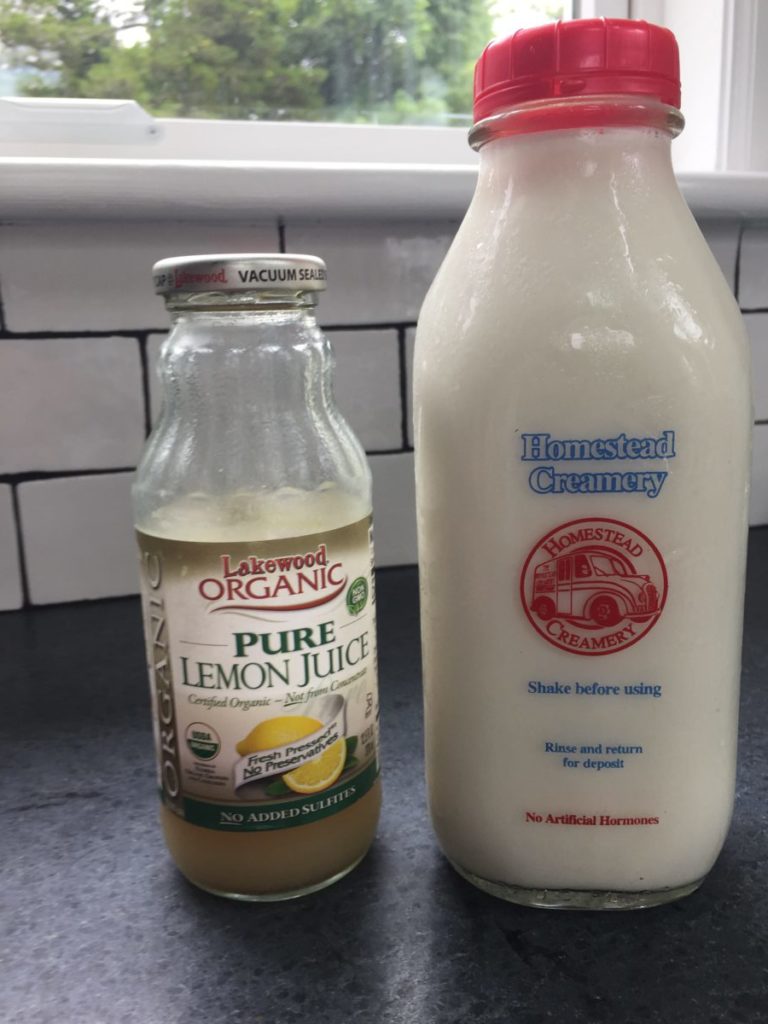
I’m lucky enough to live in a place where I can easily buy local milk in a reusable glass jug. Don’t worry, if you can’t; but do choose milk in the retro carton version over the plastic jug, if you can (that’s the eco-friendly choice), and look for milk that hasn’t been super-pasteurized. The whole process goes better that way. (Update: here’s another reason to look for small-farm, local milk. Farmers doing good work, but wow, it’s difficult.)
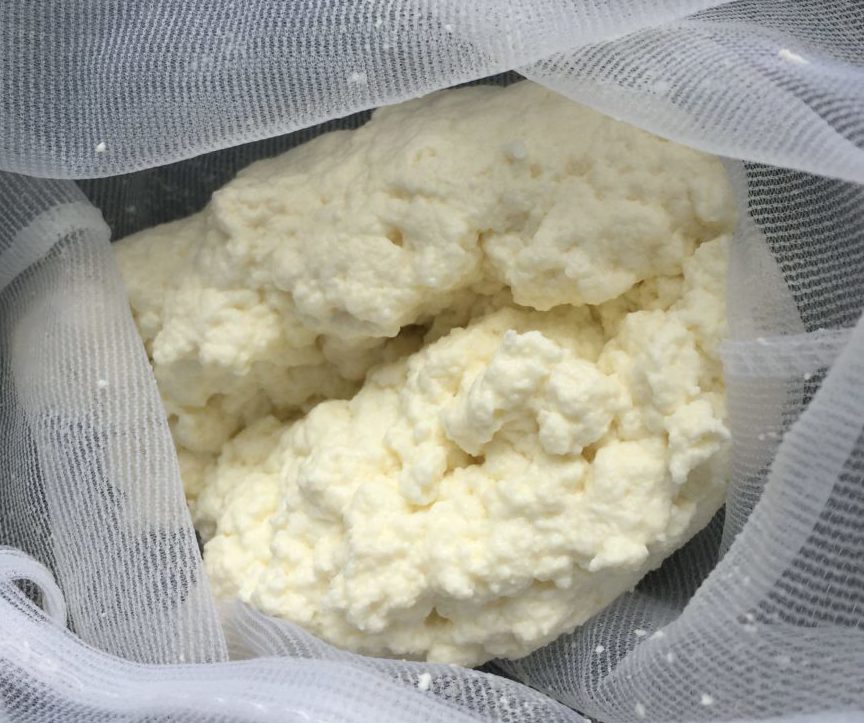
Most recipes call for fresh lemon juice. Lemons don’t grow around my mid-Atlantic home, and much as I love having those gorgeous yellow orbs on hand (and zest organic rinds to freeze for later!), I seldom do. However, I’ve always got a jar of organic lemon juice in the door of the fridge. We won’t discuss its expiration date. That works just fine here, thank you very much.
One thing I learned the hard way is that you really do have to get the milk to boiling. Something happens at that temperature that facilitates separating curds from whey. That’s the only “trick,” and it’s hardly tricky. The whole goes so quickly and easily that I feel a little guilty writing this up as a recipe.

This is based on a recipe that first appeared in Gourmet magazine (Reichl’s Gourmet I miss you!), April 2006.
Fresh Ricotta Homemade
4 C. whole milk *
2 T. lemon juice
a healthy pinch of salt
* The Gourmet recipe adds cream, too, which I did the first time I made this – adding another 1/2 C heavy whipping cream. But I forgot to add the cream the second time, and it still turned out great. Side-by-side, if I didn’t know better, I probably wouldn’t notice the difference in taste.
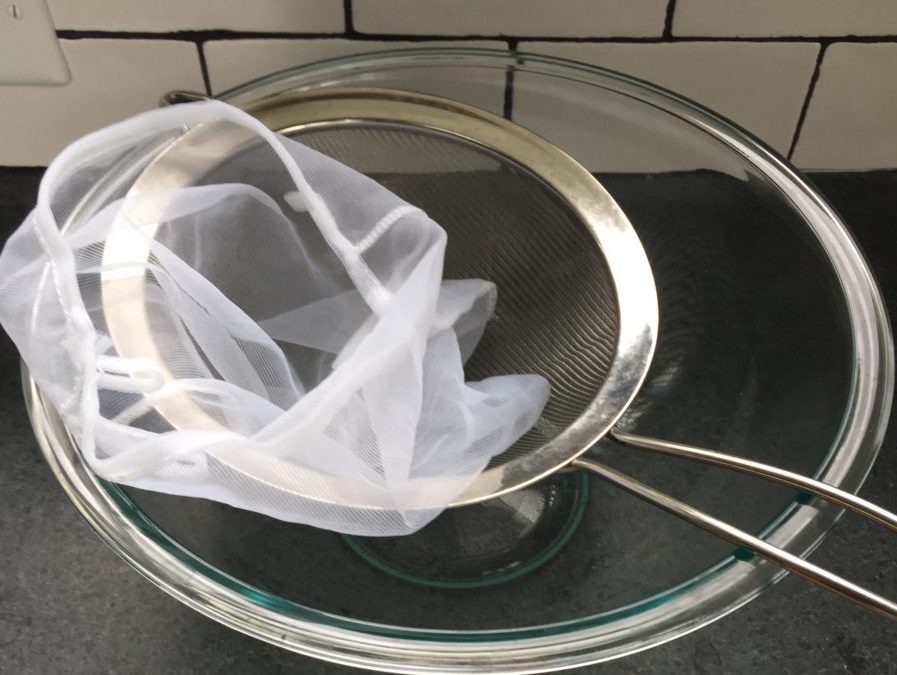
Over a big bowl, line a sieve with cheesecloth or your nut milk bag.

Bring the milk to a boil over medium heat, stirring often to keep it from scorching on the bottom. Turn off the heat. Add the lemon juice. Turn heat back on to simmer and stir until you see the milk separate into white chunks (future cheese!) in a pale yellow liquid (whey). This should happen pretty quickly – within about two minutes.
Pour the hot milk (now curds and whey) over the cheesecloth/nut milk bag. Pour the whey off into another container as necessary to let the ricotta drain. It’ll only take about 10 minutes to have a lovely lump of fresh ricotta. Taste it! so good.
Sidenote. About that whey, you’re going to have a lot of it. Don’t throw it away. Here’s an idea, make amazing bread. Or pudding! (I just did can’t stop eating it… I didn’t take pictures or otherwise record but based my effort on Mark Bittman’s, with a few changes – not least, swapping out the milk and cream for – you guessed it – whey.)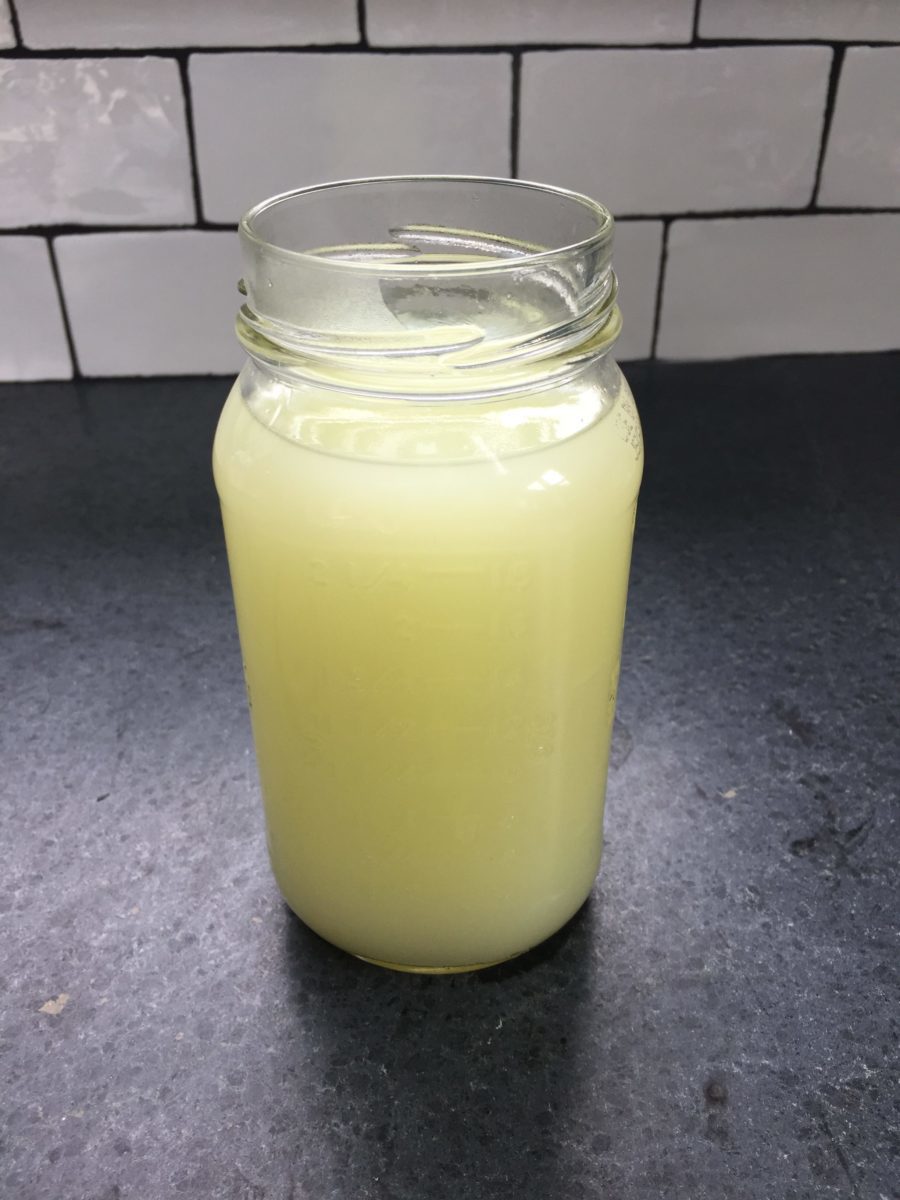
Either spoon your fresh ricotta into a container (I used a glass jar) or leave it in the mesh to cool until you refrigerate it. Enjoy! maybe while reading this interview with octogenarian oceanographer Sylvia Earle, knowing you’ve contributed no plastic to landfills and oceans. Here’s a quote to leave you on, “All the life in the ocean — from microbes and phytoplankton to fish and whales — is like an orchestra playing away. It’s taken 4.5 billion years to get this orchestra to play in harmony,…” Oooh, or this on paying attention and how we’re just beginning to learn about what there is to know about oceans: “Imagine trying to understand San Francisco by dragging a net through the streets from an airplane high in the sky. You would know nothing of the music or the arts or Golden Gate Park.” Ecosystems as great art. cool.
